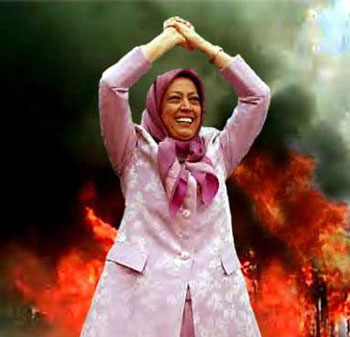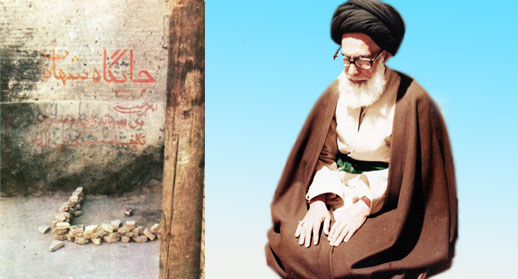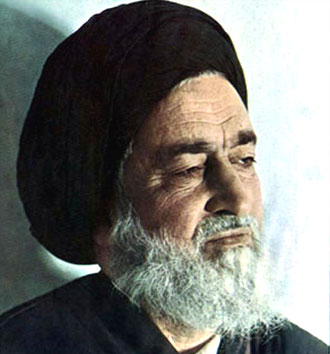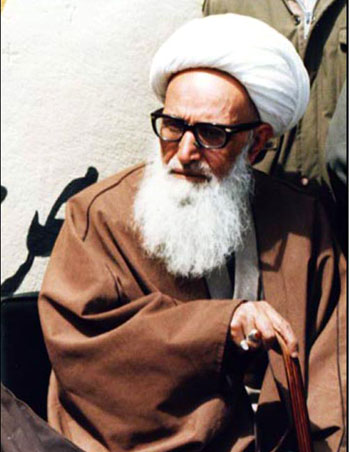|
MKO’s history is filled with complicated brainwashing techniques to prepare its members for different terrorist operations including suicide attacks and the organization has a long record of using suicide terrorism to take out Iranian political or religious elite. |

Humiliation and revenge appear to play a key role at the organizational and individual levels in shaping the sub-culture that promotes suicide operations. Humiliation is an emotional process that seeks to discipline the target party’s behavior by attacking and lowering their own and others’ perceptions of whether they deserve respect; The process that has been used along with other brainwashing techniques in terrorist organizations such as Mujahedin e-Khalq (MKO, a.k.a MEK and NCRI) to pursue the organization members to blindly obey the leaders of the terrorist group and prepare them for self sacrifice.
One of the cultish characteristics of Mujahedin e-Khalq organization is a focus on suicide operations. The MKO has frequently used the threat of suicide as a negotiating tactic or to frustrate investigations. This proved particularly effective after 10 members immolated themselves in Paris as a protest action following the arrest of Maryam Rajavi, the MKO’s co-leader, in 2003. Concerned that the Paris immolations might be repeated on a larger scale at Camp Ashraf, the JIATF rejected proposals to forcibly dismantle the organization.
Among all the terrorist approaches the MKO has taken, it seems suicide operations have usually been used to take out prominent public figures.
MKO’s history is filled with complicated brainwashing techniques to prepare its members for different terrorist operations including suicide attacks and the organization has a long record of using suicide terrorism to take out Iranian political or religious elite.
 Ayatollah Dastgheib was one of the most popular public figures who became a victim of MKO’s suicide operations.
Ayatollah Dastgheib was one of the most popular public figures who became a victim of MKO’s suicide operations.
On Friday, December 11, 1981, Ayatollah Sayed Adbulhussain Dastgheib was killed along with some of his companions when a bomb exploded as they were heading to Shiraz main mosque to perform the Friday congressional prayers. The assassin, Gowhar Adab-Awaz, 19, was a female member of the terrorist MKO.
NCRI, an offshoot of the MKO, took full responsibility of the attack in an announcement. It is written in a part of the announcement: “… on Friday, December 11, the unit was dispatched to the place to perform the preplanned operation. At the chosen moment, the Mujahed sister, Gowhar Adab-Awaz succeeded to break the security circle and killed [Ayatollah] Dastgheib along with 12 of his bodyguards by exploding a handmade bomb. Other Mujahed fighters referred to their bases without any injury. Our Mujahed sister was martyred in this brave operation…”!
Other prominent suicidal terrorist operations undertaken by the MKO include:
Assassination of Ayatollah Madani

Ayatollah Sayyid Asadullah Madani, the Leader of the Friday Prayers of Tabriz in East Azarbaijan Province was a representative of Ayatollah Khomeini there and MKO assassinated him on September 11, 1981. He was one of the closest aides of Ayatollah Khomeini. MKO could not tolerate him seeing him a popular individual not talking in their favor and perishrd him in a most inhuman manner.
Assassination of Ayatollah Hasheminejad

Following the Islamic Revolution, Martyr Hashemi Nejad was elected as an expert in the Assembly of Experts on the Constitution representing Mazandaran. He played an important role in including articles on the Velayet-e-Faqih. His political wisdom led him to recognize the deviations of Banisadr, MKO and liberals much sooner than others. He finally became the secretary of the Islamic Republic Party in Mashhad, where he started countering the hypocrisy dominant on some state departments.
Finally in September 29, Hasehemi Nejad was attacked to martyrdom by an MKO member while leaving a classroom at the headquarters of the Islamic Republic Party in Mashhad.
Assassination of Ayatollah Sadoughi

Ayatollah Sadouqi spent most of his time with Ayatollah Ruhollah Khomeini. He did not detach himself from Imam Khomeini, even when Imam was sent into exile to Turkey and then to Najaf Ashraf. During all those years, he was still in touch with Imam Khomeini through letters, and he was wholeheartedly involved with accompanying him in his anti-Shah struggles.
In July 2, 1982, when he finished the Friday prayer and when he was leaving Mihrab, a Mujahedin-e Khalq-linked suicide bomber killed himself and Ayatollah Sadouqi by pulling the pin of a grenade as he embraced the great Muslim scholar. Ayatollah Mohammad Sadouqi became known as the third martyr of Mihrab (Mihrab is a praying place in Mosque indicating the direction of the Kaaba in Mecca, where the prayer leader stands and leads the others in prayer) among Iranians.
Assassination of Ayatollah Ashrafi Esfahani

Following the victory of Islamic Revolution in 1979, Imam Khomeini appointed Ashrafi Esfahani as the Friday prayers leader of Kermanshah. Since he played a significant role in advancing the goals of revolution, the global arrogance and its internal mercenaries could not tolerate his activities and tried to assassinate him three times; two were unsuccessful but the last one, in October 15, 1982, led to the martyrdom of Ayatollah Ashrafi Esfahani. The suicide bomber who was a member of the terrorist Mujahedin-e Khalq Organization (MKO, also known as MEK and PMOI) embraced Ayatollah Ashrafi Esfahani during the Friday congressional prayer in Kermanshah and pulled the pin of a hand grenade, killing the great scholar and himself and wounding Ayatollah Ashrafi Esfahani’s son, Haj Sheikh Mohammad.
It is estimated that more than 12000 innocent Iranian people were assassinated by Mujahedin e-Khalq organization in the early years after the Islamic revolution in Iran.
